I just been into the loft for the xmas decs. While on my way up, i noted that the landing light bulb, next to the hatch, had water stains on it. Not a good start.
While up there I spotted that this light fitting is right below the valley where the extension roof joins the old roof, and the valley timber appeared to have a damp streak down it, as did a ceiling joist above the light fitting.
Up in the loft, besides the general muck, a few things bothered me. I can see daylight through the tiles in several places, and on almost every row by the party wall. The house is a 1940-50's semi, seemingly built from the scraps leftover by the other houses on the estate. Its like they had nearly enough material left over to build another house, but went ahead and built it anyway. It seems to be built entirely from engineering bricks and thermalite - you just try drilling a hole!
Also, on the side where the extension was butchered onto the roof, the horizontal components of the original roof look as though they've "slipped" off the corner diagonals. See the photos to see what I mean.
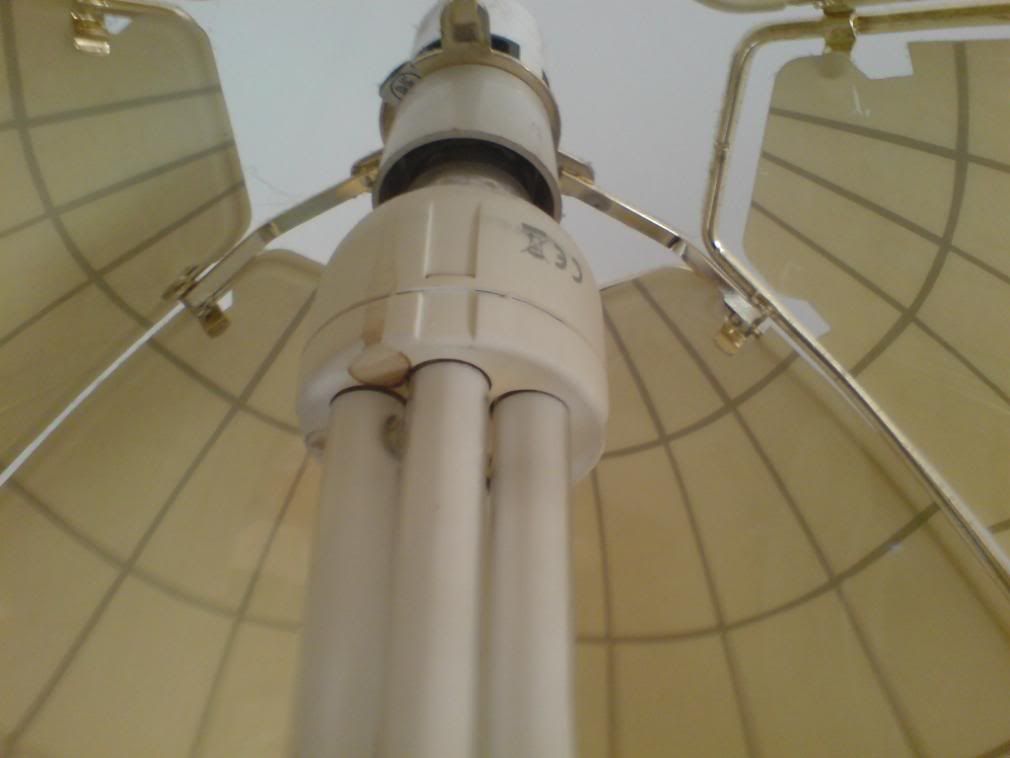
evidence of water penetration from valley.
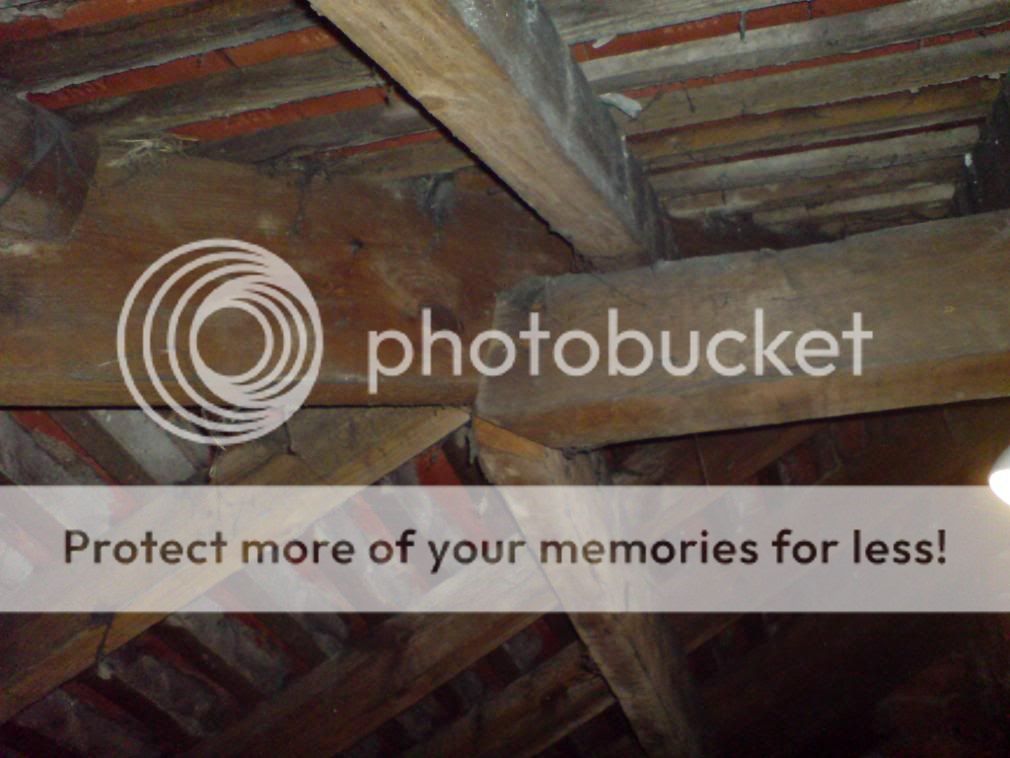
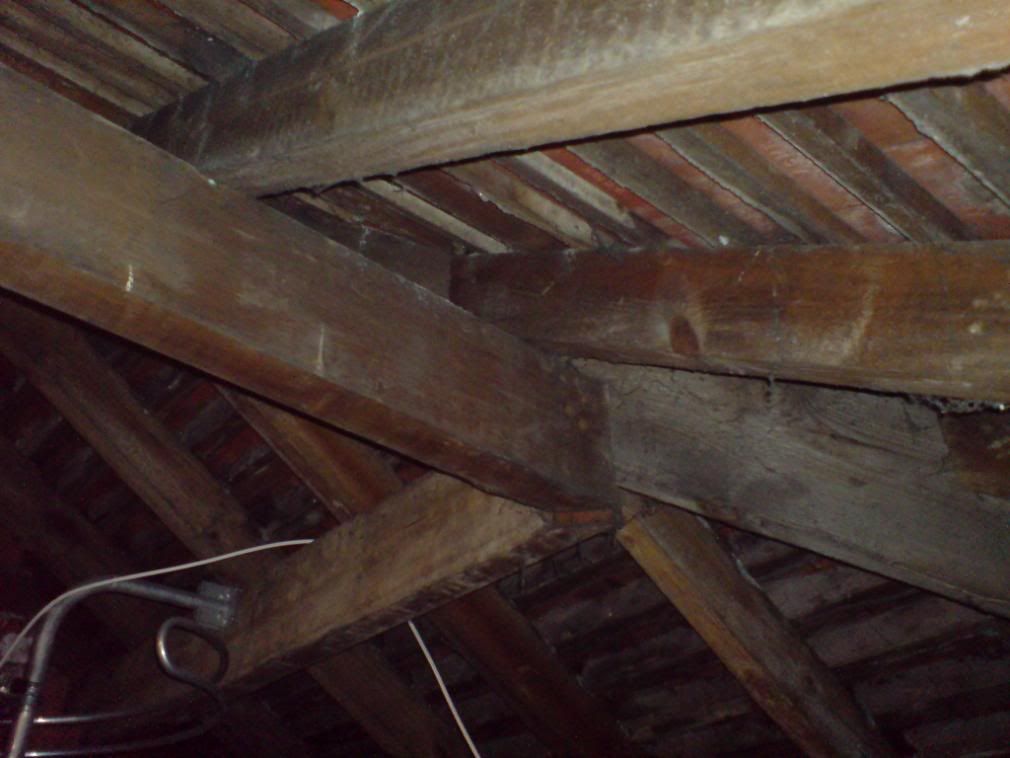

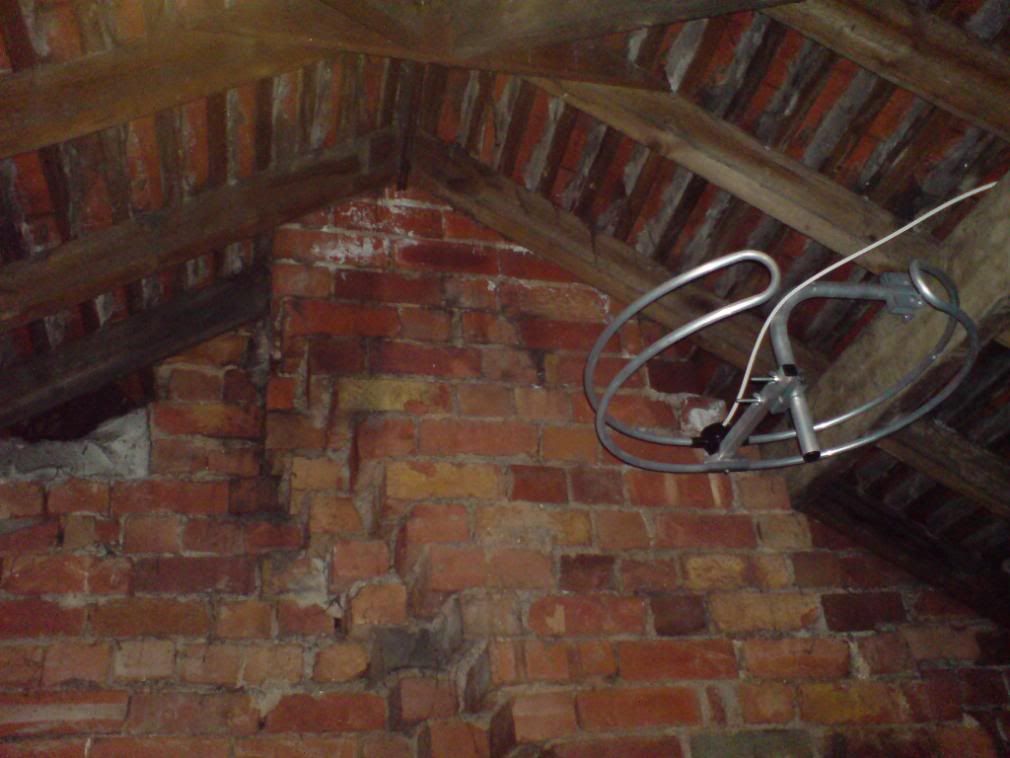

(this is where the old roof meets the valley against the new roof - some of the small horizontals have snapped)
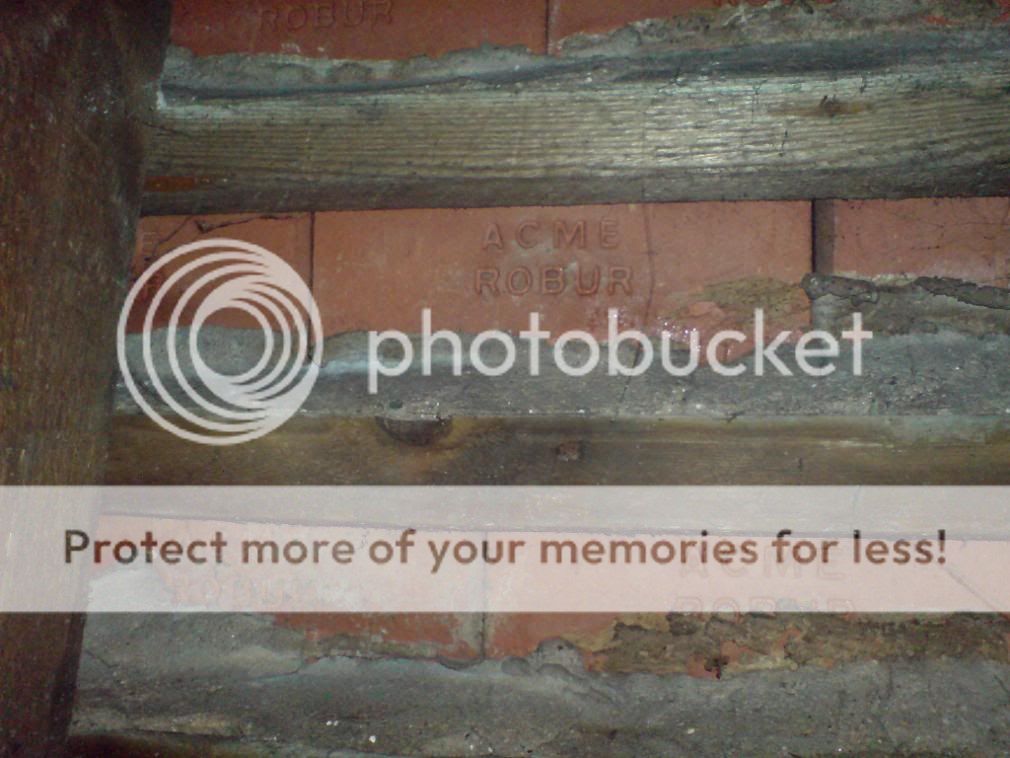
Do you think they forgot something here? Or just couldnt be bothered with felt etc?
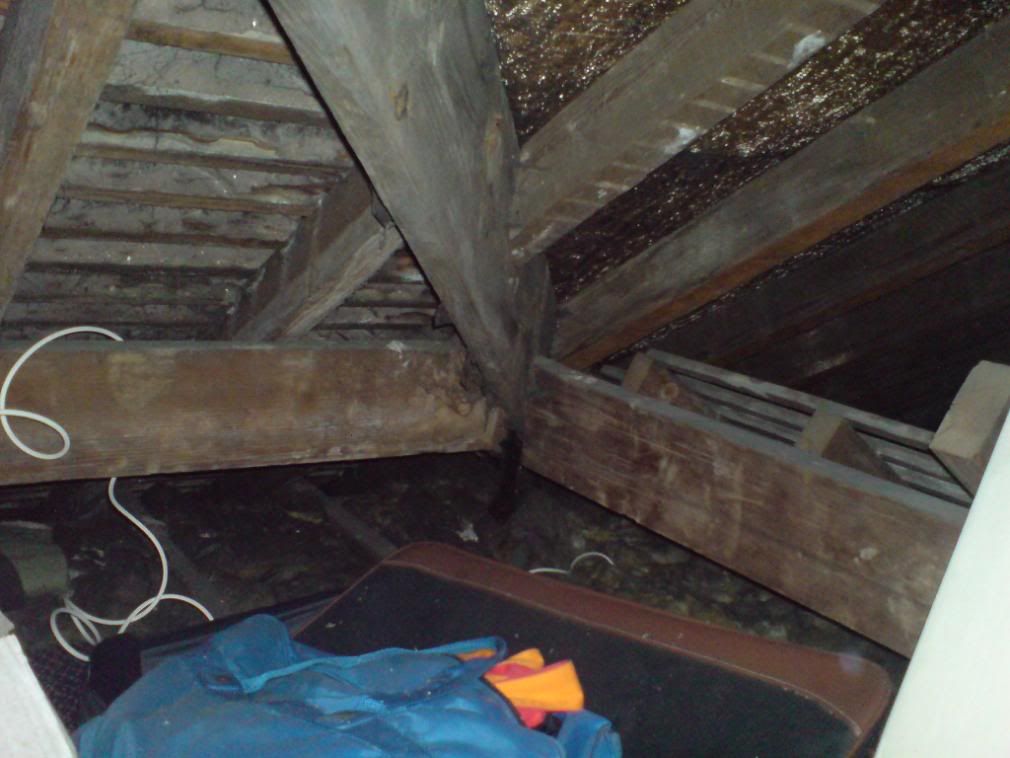
Nice butcher job.
What do the forum roofers think to the state of the roof?
While up there I spotted that this light fitting is right below the valley where the extension roof joins the old roof, and the valley timber appeared to have a damp streak down it, as did a ceiling joist above the light fitting.
Up in the loft, besides the general muck, a few things bothered me. I can see daylight through the tiles in several places, and on almost every row by the party wall. The house is a 1940-50's semi, seemingly built from the scraps leftover by the other houses on the estate. Its like they had nearly enough material left over to build another house, but went ahead and built it anyway. It seems to be built entirely from engineering bricks and thermalite - you just try drilling a hole!
Also, on the side where the extension was butchered onto the roof, the horizontal components of the original roof look as though they've "slipped" off the corner diagonals. See the photos to see what I mean.

evidence of water penetration from valley.





(this is where the old roof meets the valley against the new roof - some of the small horizontals have snapped)

Do you think they forgot something here? Or just couldnt be bothered with felt etc?

Nice butcher job.
What do the forum roofers think to the state of the roof?

